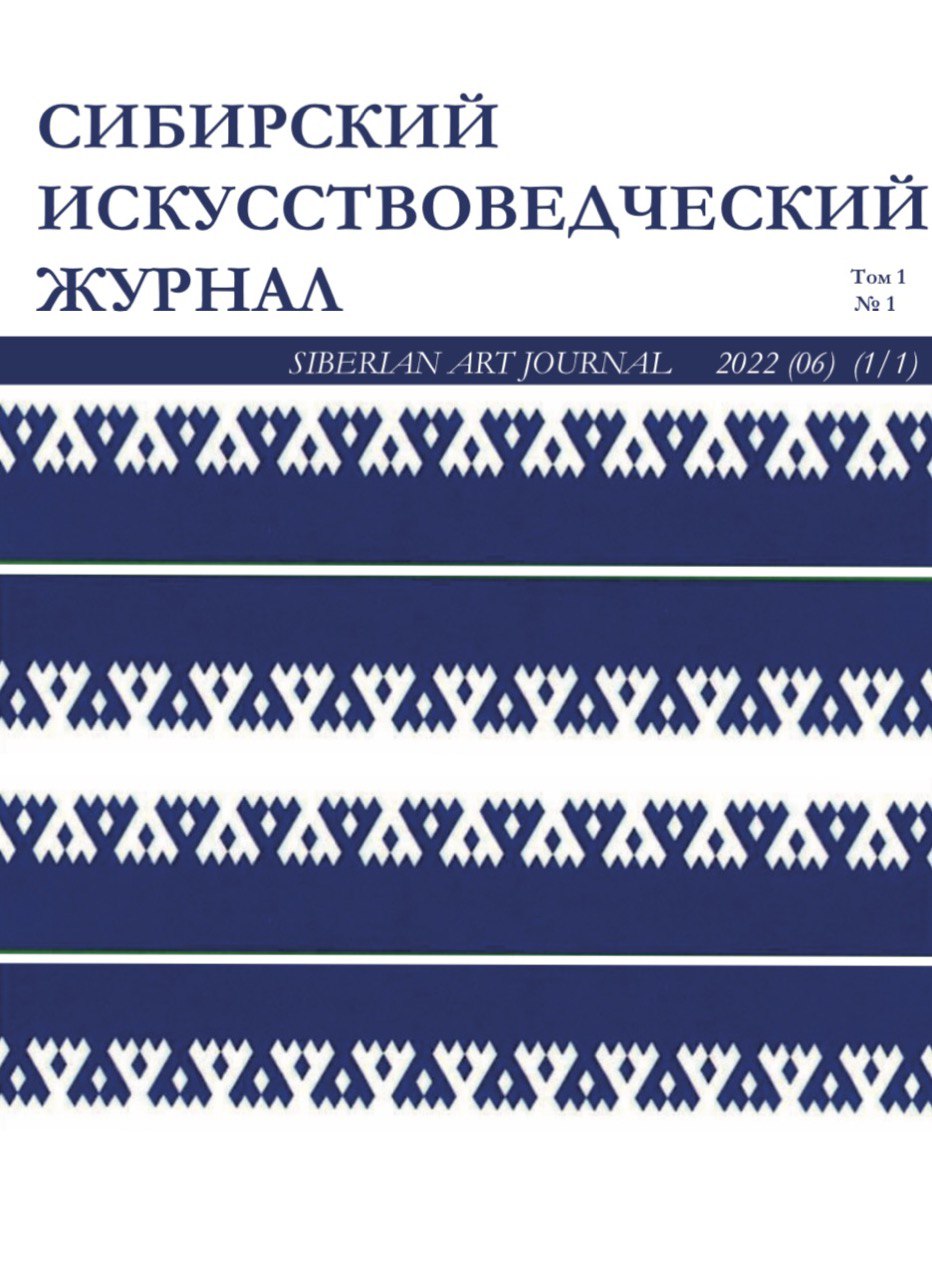This publication opens a series of scientific articles related to the problems of artistic visual communication of the viewer (recipient) and the artist (master), as well as the artist (master) and the artistic material from which the master creates a work of visual (including fine) art. Quite freely traveling through the intellectual layers of the philosophy of art and culture, aesthetics, theory and history of culture, art, the study focuses on examining the complex problems of visual thinking, which has a dialectical sensory-rational nature and is embodied in the forms of visual artistic creativity, as well as artistic reception of visual quality. The first part of the study examines the objectification of visuality, performed by the great Plato and presented in his speculative physics of the dialogue "Timaeus". To confirm the thesis on the possibility and even necessity of purposeful construction of visuality, the concept of "significant form" is considered, which is characteristic of the aesthetics of Clive Bell, one of the participants of the Bloomsbury group and a predecessor of modern psychology of art, including neuroesthetics.
visual thinking, Plato, "Timaeus", vision, K. Bell, "Bloomsbury", "significant form", R. Fry
1. Heisenberg, W. (1987). What is an elementary particle? In Steps beyond the horizon (163–177). Moscow: Progress.
2. Zhukovsky, V. I., Koptseva, N. P. (2004). Propositions of the theory of fine arts. Krasnoyarsk: Krasnoyarsk State University Publishing House, 265.
3. Lyovshin, V. A., Alexandrova, E. B. (1974). The great triangle, or wanderings, adventures and conversations of two philomaths. Moscow: Detskaya literatura, 207.
4. Lyovshin, V. A., Alexandrova, E. B. (1973). Seekers of unusual autographs, or wanderings, adventures and conversations of two philomaths. Moscow: Detskaya literatura, 206.
5. Losev, A. F. (2000). History of ancient aesthetics. Sophists. Socrates. Plato. Moscow: AST Publishing; Kharkiv: Folio, 846.
6. Okhotsimsky, A. (2015). Fiery tetrahedron. The theme of fire in Plato. [Electronic source] Available at: https://proza.ru/2015/03/21/2044
7. Plato. Timaeus. Dialogue.
8. Trushina, M. A. (2018). Plato and the necessity of visualization. Bulletin of RHGA, (3), 24–29. [Electronic source] Available at: https://cyberleninka.ru/article/n/platon-i-neobhodimost-vizualizatsii (Accessed: 23.08.2025).
9. Alpha online. Ancient Greek–Russian dictionary. [Electronic source] Available at: https://gurin.tomsknet.ru/alphaonline.html
10. Bell, C. (1914). Art. London: Chatto & Windus, 326.
11. Bell, C. (1922). Since Cézanne. London: Chatto & Windus, 268.
12. Chilvers, I. (ed.). (2003). The concise Oxford dictionary of art and artists. Oxford: Oxford University Press, 532.
13. Fry, R. (1920). Vision and design. London: Chatto & Windus, 260.
14. Mondrian P., Holtzman H., James M. S. (1986). The new art – the new life: The collected writings of Piet Mondrian. Boston: G. K. Hall, 504.
15. Russell, B. (1917). Mysticism and logic and other essays. London: Allen and Unwin, 138.
16. Zeki, S. (2013). Clive Bell’s “Significant Form” and the neurobiology of aesthetics. Frontiers in Human Neuroscience, 7, 730. https://doi.org/10.3389/fnhum.2013.00730





